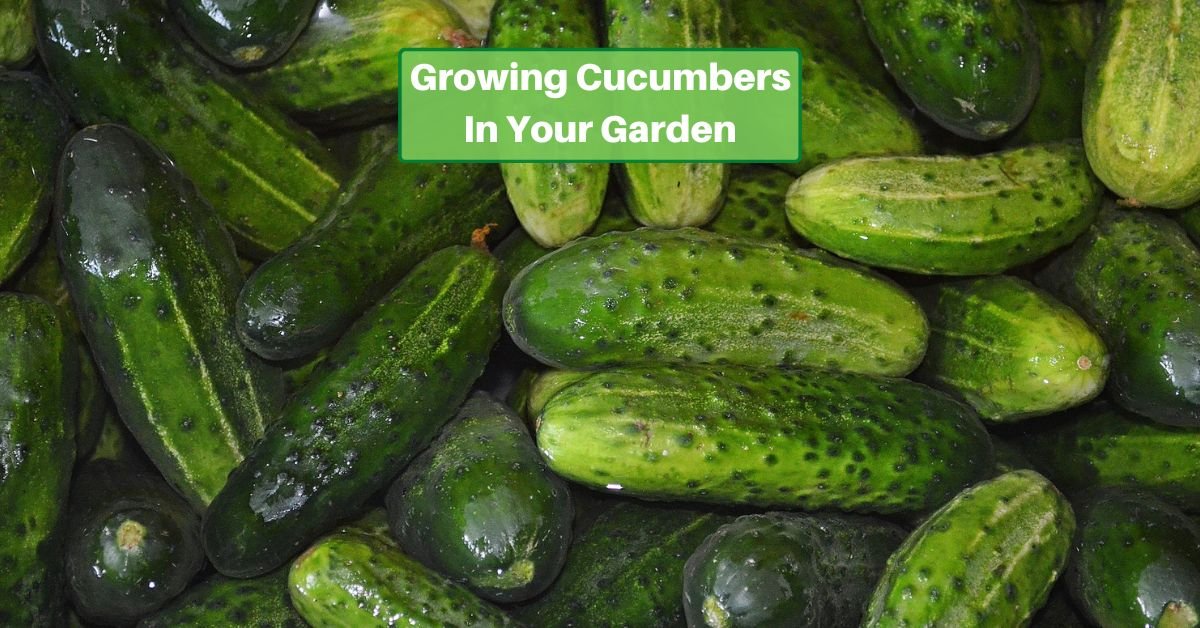The refreshing taste and wide variety of uses of the cucumber make it a popular addition to salads, sandwiches, and even beverages. They can be grown in your garden and yield a great crop that you’ll be able to enjoy in a variety of ways! Here, we’ll guide you through all you need to know about cultivating this delicious crop.
Choosing the Right Time to Plant
Make sure you plant your cucumbers at the right time so that they’ll germinate and thrive. They are warm-season vegetables that thrive in temperatures between 70°F and 95°F (21°C – 35°C). They are sensitive to frost, so wait until after the last frost date in your region before planting.
Alternatively, you can start cucumber seeds indoors a few weeks before the last frost date and transplant the seedlings outdoors once the weather has warmed.
Planting Cucumber Seeds or Seedlings
Cucumber seeds can be sown directly into the garden bed, about one inch deep. If you choose to start seedlings inside, transplant them when they have two or three true leaves.
If you’re going to provide trellises for the plants, space them about 12 inches apart. Otherwise, you’ll need to allow 36 – 60 inches between them because they like to spread out.
Order Cucumber Seeds Online
Preparing the Soil
Cucumbers prefer well-drained, fertile soil with a slightly acidic to neutral pH (around 6.0 to 7.0). Till the soil to a depth of about 8-12 inches and remove any obstructions.
Compost will help with soil fertility and water retention, so it’s always a good addition.
Sunlight Requirements
Cucumbers thrive in full sunlight. Plant them in a part of your garden where they’ll get at least 6-8 hours of direct sunlight per day.
Fertilizing and Watering
Cucumbers benefit from regular fertilization to support their vigorous growth. Incorporate a balanced, all-purpose fertilizer into the soil before planting. During the growing season, additional nitrogen-rich fertilizer every 3-4 weeks should be side-dressed to promote vine growth and fruiting.
It’s also important that the soil be consistently moist. Water deeply and regularly, but of course don’t waterlog the plants. Mulching helps retain moisture and suppress weed growth.
Support and Trellising
Cucumber vines are known for their sprawling growth, but they will climb if given the opportunity. Consider providing support for the vines using trellises or vertical structures.
Training cucumbers to grow vertically saves space for other plants. But it also promotes better air circulation, reducing the risk of disease.
Pest and Disease Management
Cucumbers can be susceptible to pests such as cucumber beetles and diseases like powdery mildew. Regularly inspect your plants for signs of infestation or disease. When necessary, use appropriate measures such as using row covers or applying organic insecticides to protect your vines.
Harvesting Cucumbers
Recognizing the right moment to harvest cucumbers will get you the best flavor and texture. Cucumbers are typically ready to be harvested when they are firm, uniformly colored, and the desired size. Depending on the variety, this can range from small pickling cucumbers to larger slicing cucumbers.
The entire process from seed to harvest takes 50 to 70 days, depending on the variety.
To harvest, use a clean pair of garden shears or scissors to cut the cucumber from the vine, leaving a small stem attached. Avoid twisting or pulling the cucumber to prevent damage to the plant.
Growing cucumbers in your home garden is a fulfilling and fun process to watch as your cucumber vines grow up (or out) and eventually give you a fantastic product. By taking the proper steps throughout the process, you’ll help make sure your crop will yield a delicious result that you can enjoy in a variety of ways!










